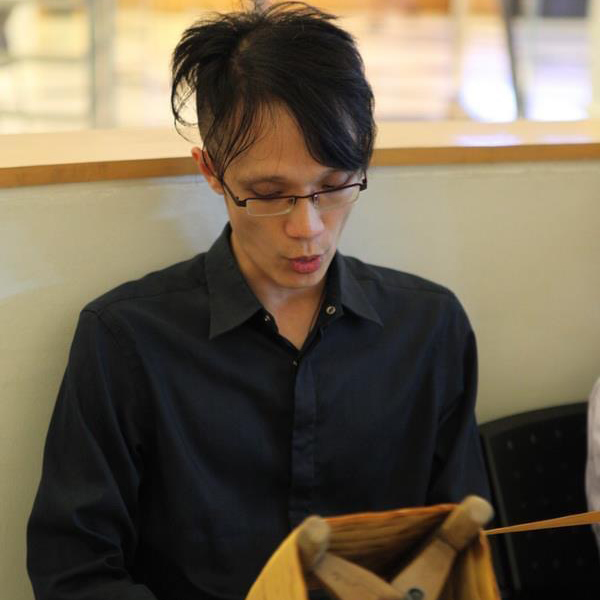LIN Chi-Wei

Born in Taiwan in 1971, Lin Chi-Wei studied traditional art at TNUA in Taipei, where he participated in field research led by ethnomusicologist Lu-Chui-Kuan (吕锤宽) on indigenous and Taoist music . At the same time Lin Chi-Wei formed “Z.S.L.O” in 1992, the first noise group in Taiwan and co-organized Taipei Broken Life Festival, at the height of the noise movement in Asia. He then left for France to further his studies on new media at FRESNOY in 2000.
His book “Beyond sound art – Avant-gardism, Sound Machine and Modernity of listening”, released in 2012, had a significant impact in the world of Chinese-speaking new media art. Soon after, Lin was represented by the Hong Kong gallery Hanart TZ, and admitted as a research associate at the China Academy of the Arts, School of Intermedia Art.
As a performing artist in the world of electronic music during the 1990s, Lin also worked as curator of the so-called “industrial” music festival (Experimental music movement inspired by Da-daism and Situationism), he is struck by the creative energy of the spectators who attend the concerts, the power of which disrupts the course of the performances.
At the same time, he explored in TNUA’s field research, the diversity of Aboriginal ceremonies characterized by spontaneous music produced by all the members of the group where the score is not the focal point of performance. Lin draws inspiration from this to create works of art calling for public participation.
The result is the production of dozens of works from the “Interhuman Dynamic Coordination Models” series that Lin Chi-Wei designed in an attempt to highlight the forms of collective intelligence embodied in these ephemeral gatherings.
Models can be thought of as functioning as a sort of “synchronizer”, providing both synchronization signals and a basic sound pattern. With these minimal indications, participants give free rein to their expression by relying on the benchmarks they have received. Everyone seeks their own sound interpretation in relation to others, defines the duration, pitch, timbre and means of dialogue with others. This can take the form of a monologue or collective harmony, or even sometimes a provocation in relation to the group.
We find in the “Models” series all the communicative means explored throughout human history: As far as digital technology is concerned, there is “Cellular Automata”, “Talking Knots” and “Sequencer Musics”. For analog technology: “Tape Music”, “Multi-Tract Tape series”, “Calligraphy”, “Cyber Music” and “Chapelet Sonore”.
The most popular among the series: “Tape Music” was developed in Taiwan, Beijing and Paris between 2004-2006. She has since been performed over 200 times in numerous countries and contexts including the Tate Modern, the Center Pompidou, the Venice and Shanghai Biennale. It has even been performed in churches, factories, Buddhist temples, primary schools and in nature.
“Tape Music” imitates the mechanical process of playing magnetic tape and plays long rolls of annotated musical scores. Through impromptu collaboration, an elaborate chorus is orchestrated by participants using their voices and performing spontaneously. Despite the absence of a conductor and rehearsal, a temporary “sound community” is formed during each performance session.

Chapelets Sonores

Cinq Chanteurs

Partition Musique sur bande-1 & 2
